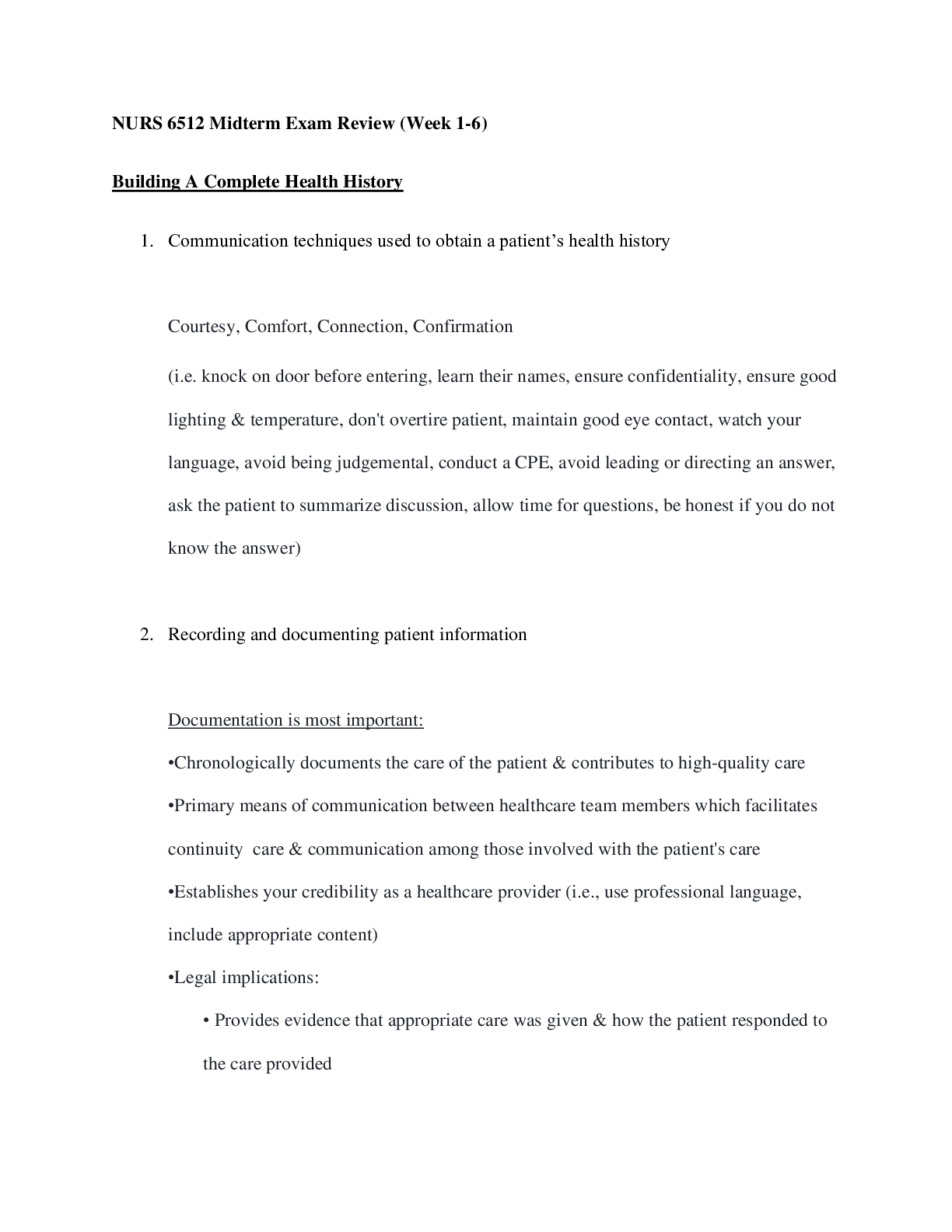*NURSING > STUDY GUIDE > Bio 319 Midterm Exam review sheet (All)
Bio 319 Midterm Exam review sheet
Document Content and Description Below
Bio-319 Midterm Study guide Chapters 1-6 *If you go through each item on this study guide and read about it on in your text, you should have an excellent study guide for the Midterm Exam. * ... Chapter 1 Define Phytochemicals, zoonutrients, micronutrients and macronutrients o Phytochemicals – health promoting compound in plant based food o Zoonutrients – Health promoting compound in animal based food o Micronutrients – Vitamins and minerals o Macronutrients – Proteins, lipids, fats, and water. Anything consumed in large quantity Explain importance of dietary fiber o Helps with movement in digestive system Explain the steps in the scientific method o Make an observation o Proposing a hypothesis Predict the relationship between variables Causual relationship correlation o Experiment Epidemiologic studies- no intervention Correlation- determine if one variable is correlated to another Intervention studies Control group, Placebo, blinded studies, and random assignment Review questions to ask to determine scientific basis of nutritional claim o Where was it published? o Who conducted the study? o Who paid for the research? o Did the researcher use the right study design? o Do public health organizations concur? Define essential, nonessential and conditionally essential nutrients o Essential – Must be obtained through diet o Nonessential – body can produce o Conditional essential – circumstances such as because of an illness Be able to complete calculations similar to the “practice with calculations worksheet” assignment. (You may bring a calculator to class for the exam as long as it is JUST a calculator. Tablets and smart phones are NOT allowed.) APPLY your understanding of research studies including terminology Epidemiologic, Control, Blinded, Intervention, Random, and Placebo. o Epidemiologic Control – o Blinded – blinding the participants so they don’t know if they get the placebo or the actual treatment o Random- random assignment to an experimental group ( Control vs. treatment) o Placebo – not the actual treatment ... usually a fake treatment Know current trends in Infant Mortality Rates and Life Expectancy in the United States. o Infant mortality rates have decreased and life expectancy has increased DEFINE and APPLY characteristics of Chronic Degenerative Diseases. o Chronic Degenerative Diseases: a non infectious disease that develops slowly, persists over a long period of time, and tends to result in progressive breakdown of tissues and loss of function Leading cause of death Risk factors Tobacco use, physical activity, dietary habits Causes DNA, what is put in your body, what a person is exposed to , and physical activity Chapter 2 Describe the tools for assessment of nutritional status o ABCD methods of nutritional assessment Anthropometric measurement Physical dimensions and composition Biochemical measurement Lab analysis of biological samle Clinical assessment Medical history Dietary assessment Diet record or food record Define Malnutrition, Overnutrition, and Undernutrition. o Undernutrition Inadequte intake of nutrient or energy o Overnutrition Nutritional toxicity o Malnutrition Nutritional status Inadequate diet Define Dietary Reference Intakes (DRI). o a set of four dietary assessment stan-dards used to assess and plan dietary intake. The four reference values that comprise the DRIs are: Define Recommended Dietary Allowance (RDA). o RDA: Recommended Dietary Allowances Meets 97% healthy individuals needs Not available for all nutrients DEFINE and APPLY Primary and Secondary Malnutrition. o Primary Malnutrition A condition by which poor nutritional status is caused strictly by inadequate diet. o Secondary A condition by which poor nutritional status is caused by factors other than diet, such as illness. Define nutrient density o The ratio of amount of nutrients a food gives to its calories APPLY recommendations (EAR, RDA, AI, and UL) to recommend corrective actions when a client is outside of these limits. KNOW the recommended AMDR percentages, and based on a specific EER, be able to CALCULATE the appropriate amount of carbs, proteins, and fats of a person’s diet. o Carbohydrates o 45 to 65 % total energy o Proteins o 10 to 35 %total energy o Fats o 20 to 35 %total energy o Take the percentage and multiply it by the EER Know the 2010 Dietary Guidelines for Americans and their suggestions for balancing calories and managing weight. o Balancing calories to manage weight o Foods and food components to reduce o Foods and nutrients increase o Build healthy patterns APPLY principles of best practices when tracking food intake with programs associated with your text or the government MyPlate website. Know the requirements found on a Nutrition Facts panel o Food serving size o Amount of iron o Total calories o Total carbs o Sugar o Protein o Total fat o Cholesterol o sodium Chapter 3 Define Digestion. o The physical and chemical breakdown of food that allows the nutrients to be absorbed Identify the organs of the digestive system and the accessory organs of the digestive system o Organs Mouth, Esophagus, Stomach, Small intestine, Large intestine o Accessory organ Salivary Glands, Liver, Pancreas, Gallbladder Describe the functions of the accessory organs of the digestive system o Salivary Glands: Aids in chemical digestion by releasing a mixture of water, mucus, and enzymes o Liver: produces bile which is important for lipid digestion o Pancreas: releases pancreatic juice that neutralizes chime and contains enzymes needed for carbohydrate, protein, and lipid digestion o Gallbladder: stores and releases bile Describe the molecular formula o Represents the number and types of atoms present in a molecule 2+ atoms joined by a chemical bond Understand the advantage of bacteria in the large intestine. Compare and Contrast Simple and Facilitated Diffusion. o Simple Substance moves from higher concentration to a lower concentration without the use of energy or assistance of a transport protein o Facilitated Substance moves from a higher concentration to a lower concentration with the use of energy and assistance of a carrier molecule Know the Definition and Cause and treatment of Gastroesophageal Reflux Disease (GERD). o A condition caused by chronic reflux of the stomach content into the esophagus, irritating the lining o Can be treated by changing lifestyle by avoiding large meals and certain types of food Define Nutrient Absorption and factors affecting bioavailability. o Nutrient Absorption o Bioavailability The extent to which a nutrient is absorbed into the blood or lymphatic system For example vitamin C can enhance the absorption of certain irons Describe prebiotic and probiotic foods o Prebiotic Fiber rich food that may stimulate growth of the microbial population in the large intestine o Probiotic Contains live bacterial cultures, some thrive in the colon Know the functions of the Gallbladder and possible nutritional complications that arise from its removal. o When high fat foods are consumed, the gallbladder releases bile to disperse the large globules o gallstones Define Celiac Disease and predict nutritional consequences associated with having this condition. o Inflammatory response to gluten o Because of the progressive damage done to the inner lining of the small intestine, people with celiac disease often experience sever signs and symptoms such as diarrhea, weight loss, and malnutrition. Define Irritable Bowel Syndrome and predict physical consequences associated with having this condition. o A disorder that typically affects the lower GI tract, causing bouts of cramping, bloating, diarrhea, and constipation Chapter 4 Differentiate between simple and complex carbohydrates o Simple Produced mainly by plants Monosaccharides Glucose, fructose, and galactose Disaccharides Lactose, Sucrose, Maltose o Complex Polysaccharides Glycogen, starch, and dietary fiber Know the monosaccharides that combine to form disaccharides o sucrose- one molecule of glucose and one molecule o fructose lactose- one molecule of glucose and one molecule of galactose maltose-two glucose molecules o Differentiate between Aspartame, Saccharin, Sucralose and Stevia by definition. o Saccharin (sweet n low) o Aspartame (equal)- sensitivity & Phyenylketonuria (PKU) o Sucralose (Splenda) [Show More]
Last updated: 1 year ago
Preview 1 out of 10 pages
 (1).png)
Reviews( 0 )
Document information
Connected school, study & course
About the document
Uploaded On
Sep 29, 2021
Number of pages
10
Written in
Additional information
This document has been written for:
Uploaded
Sep 29, 2021
Downloads
0
Views
47



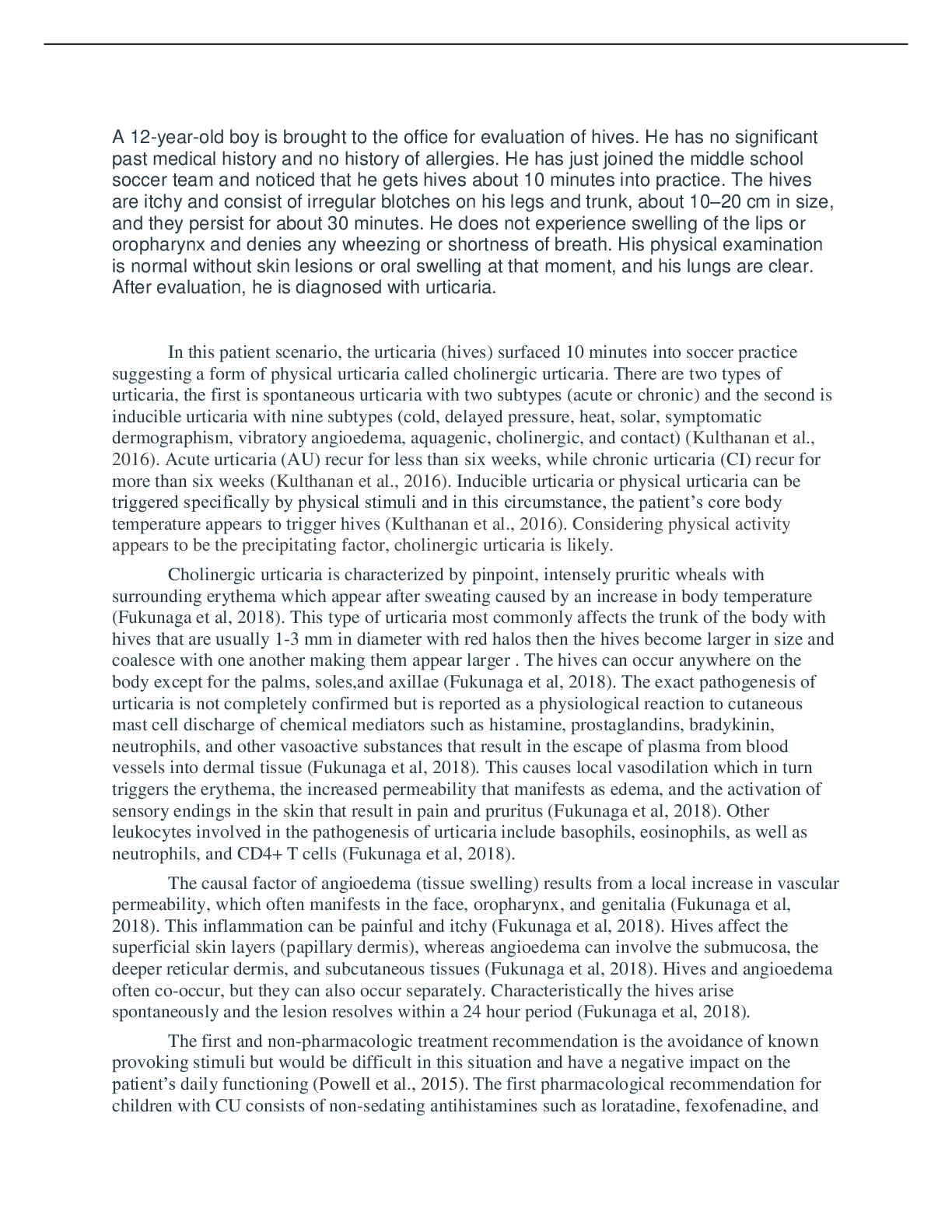
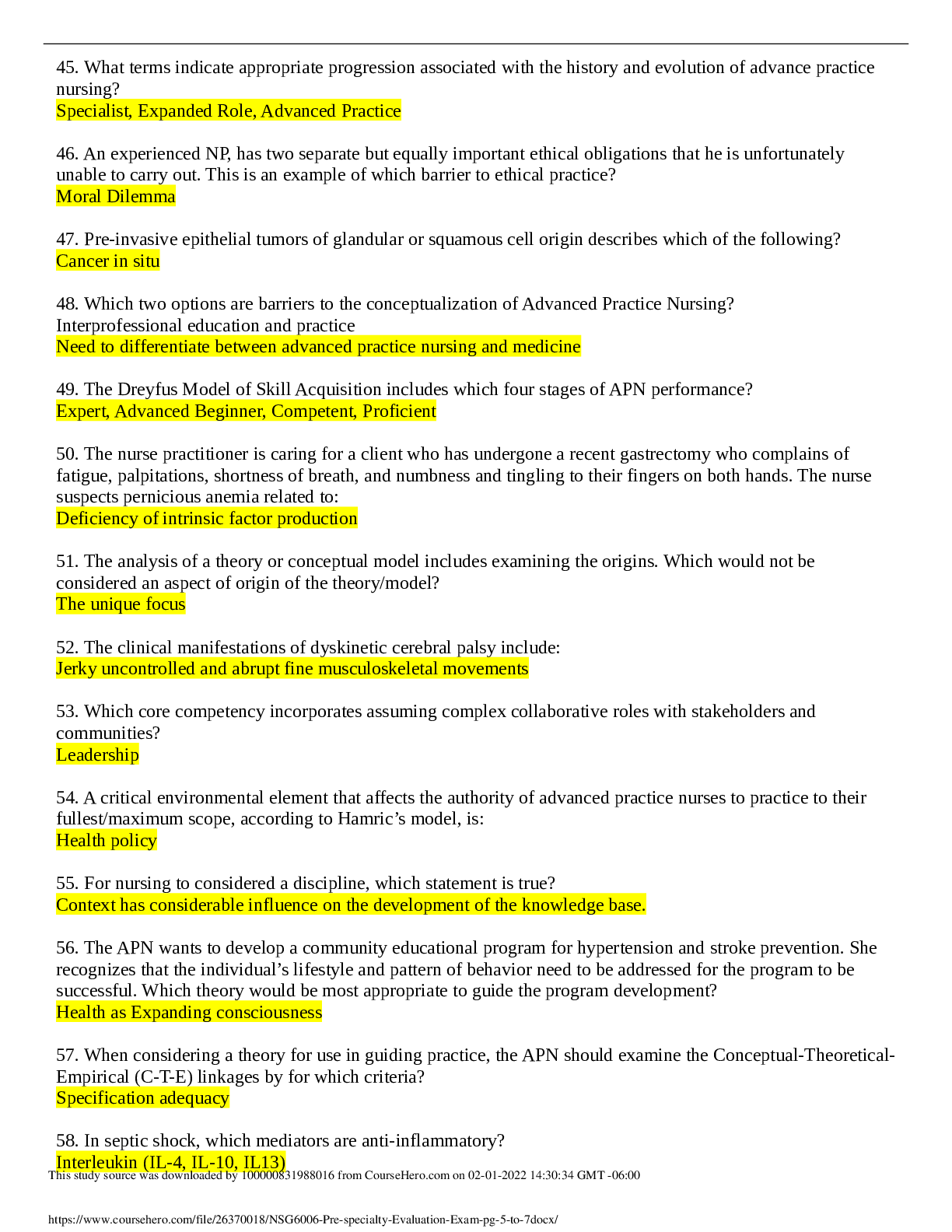


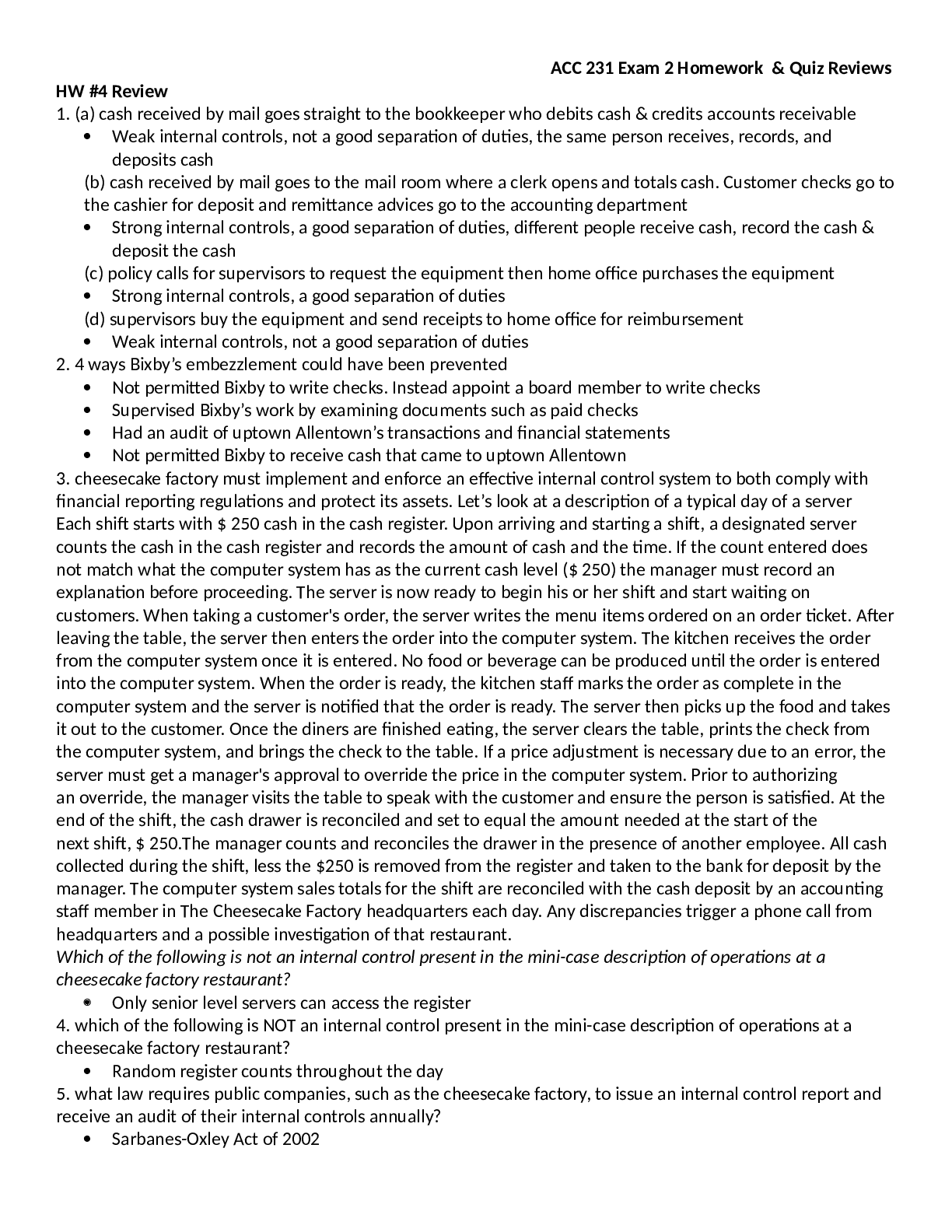

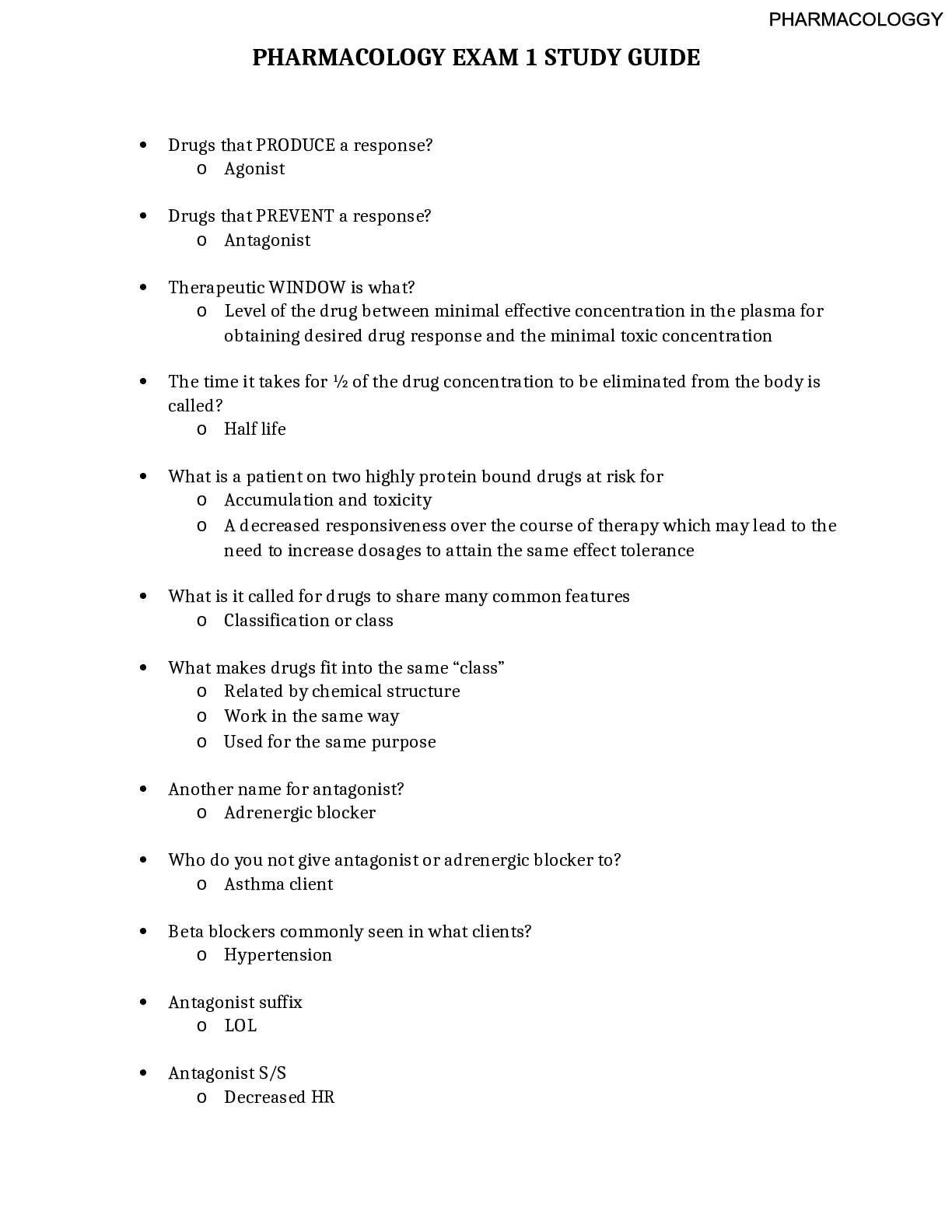
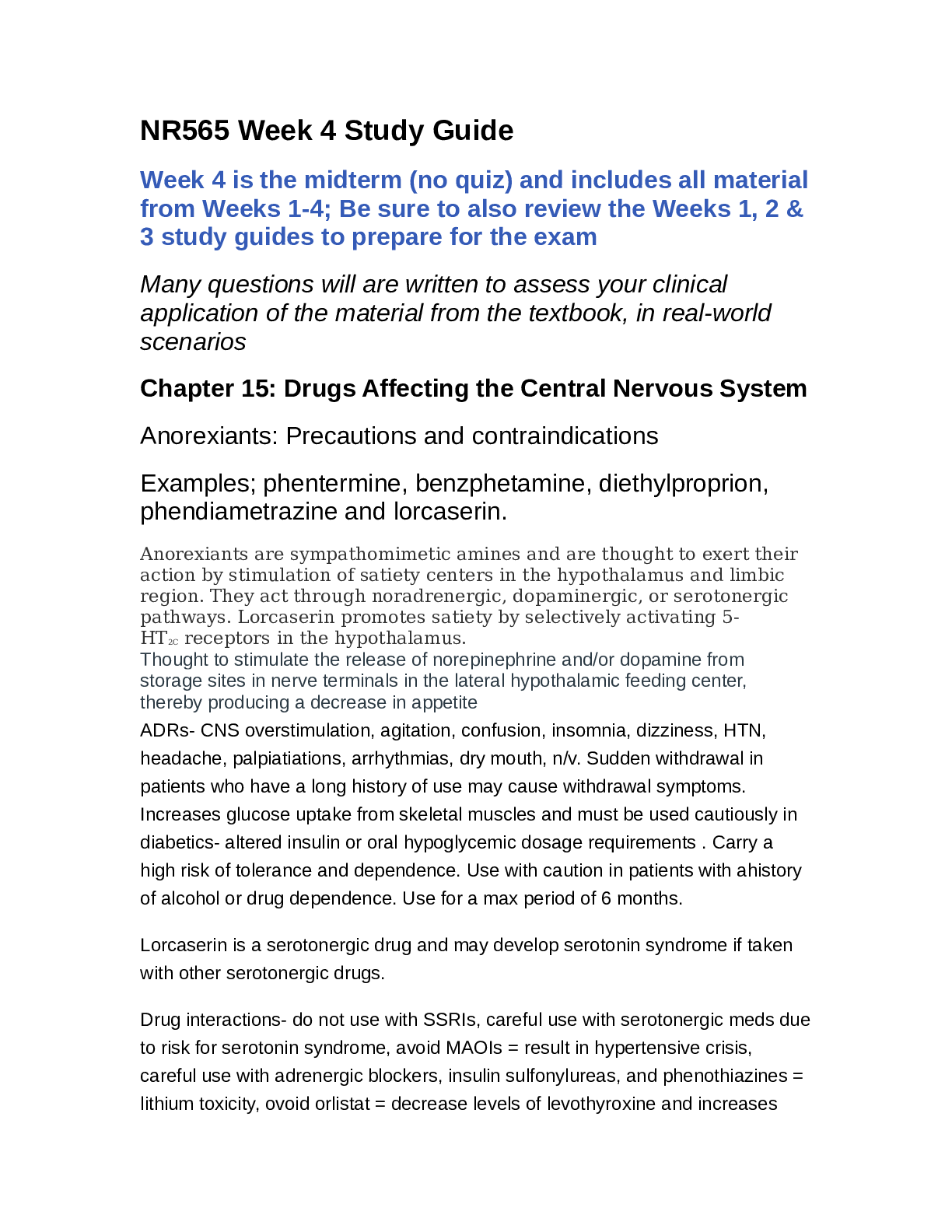



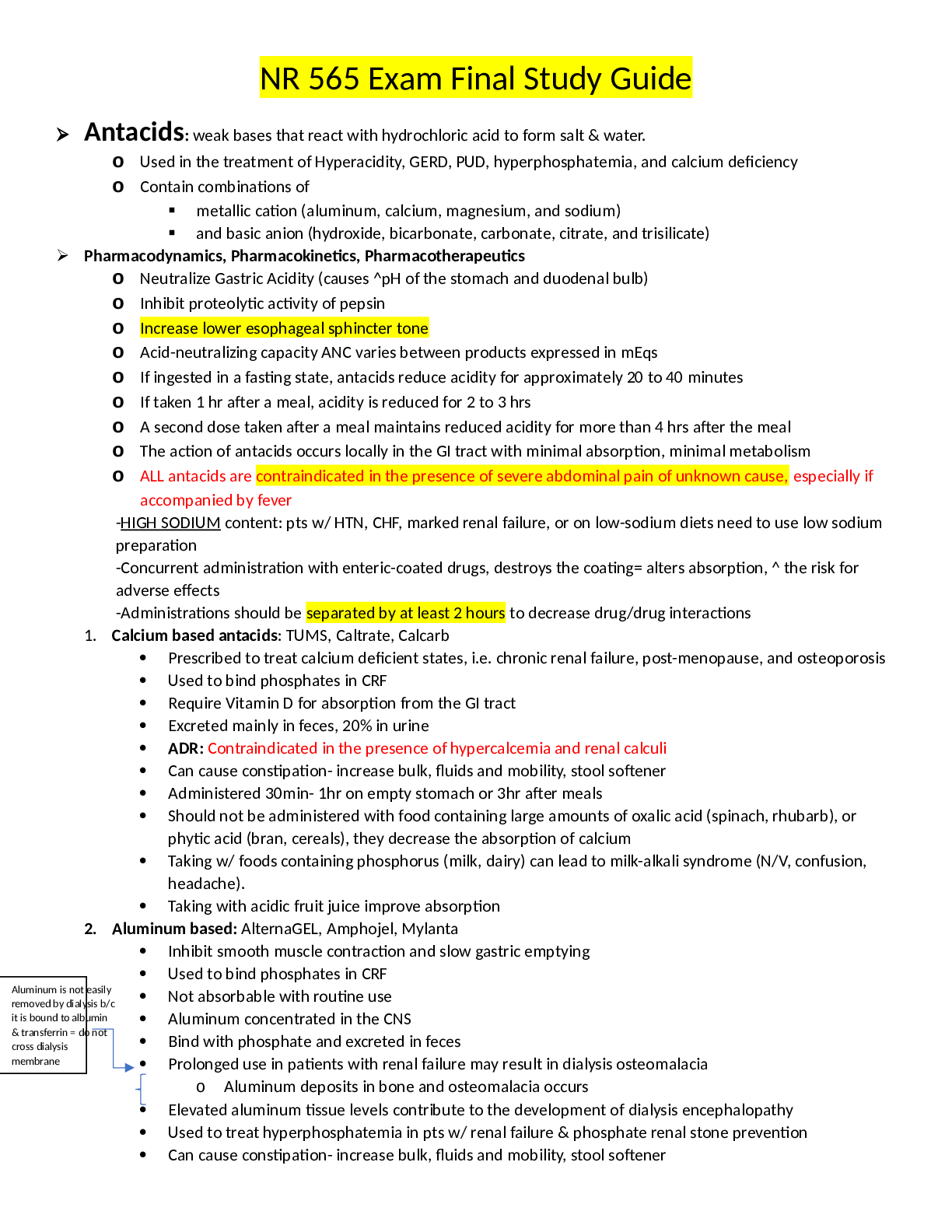

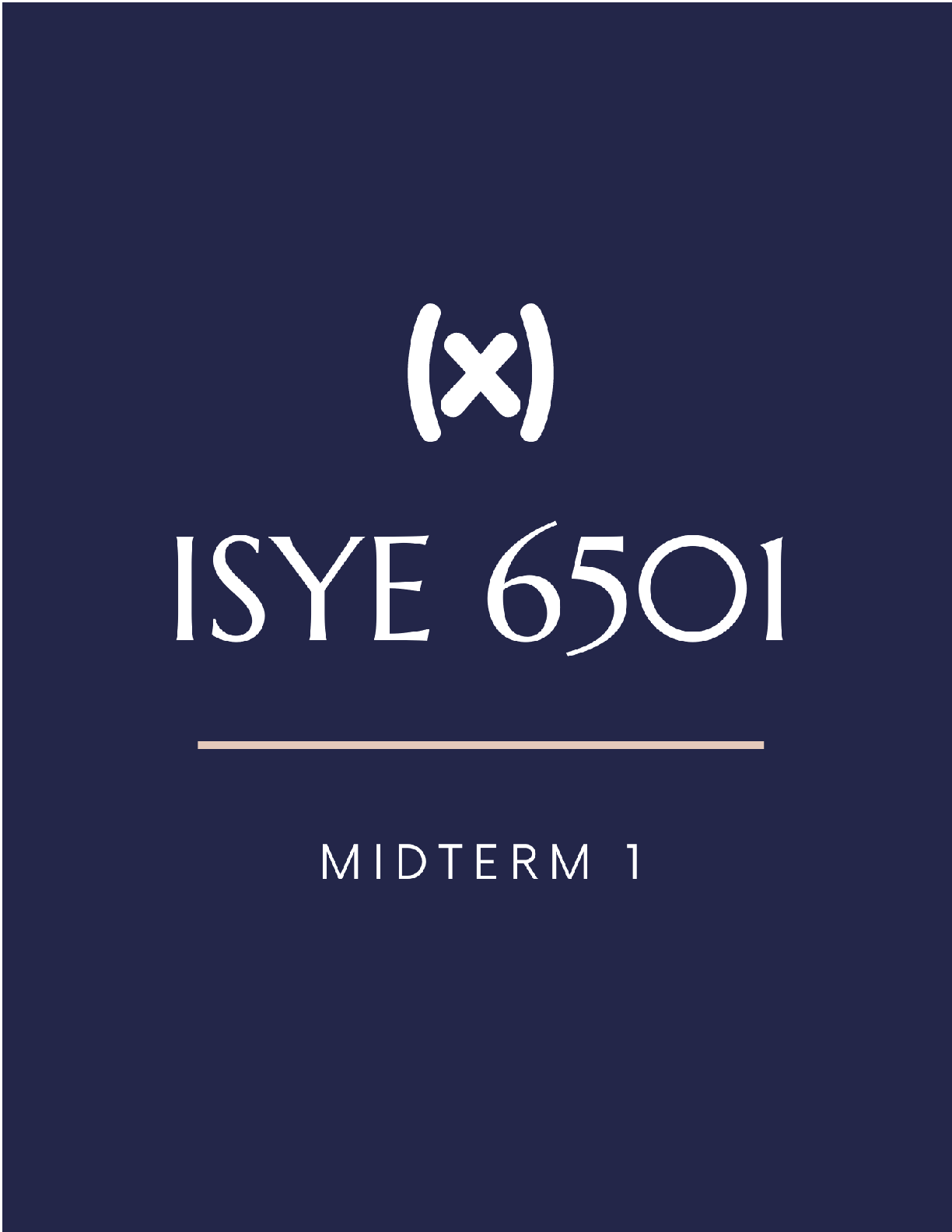
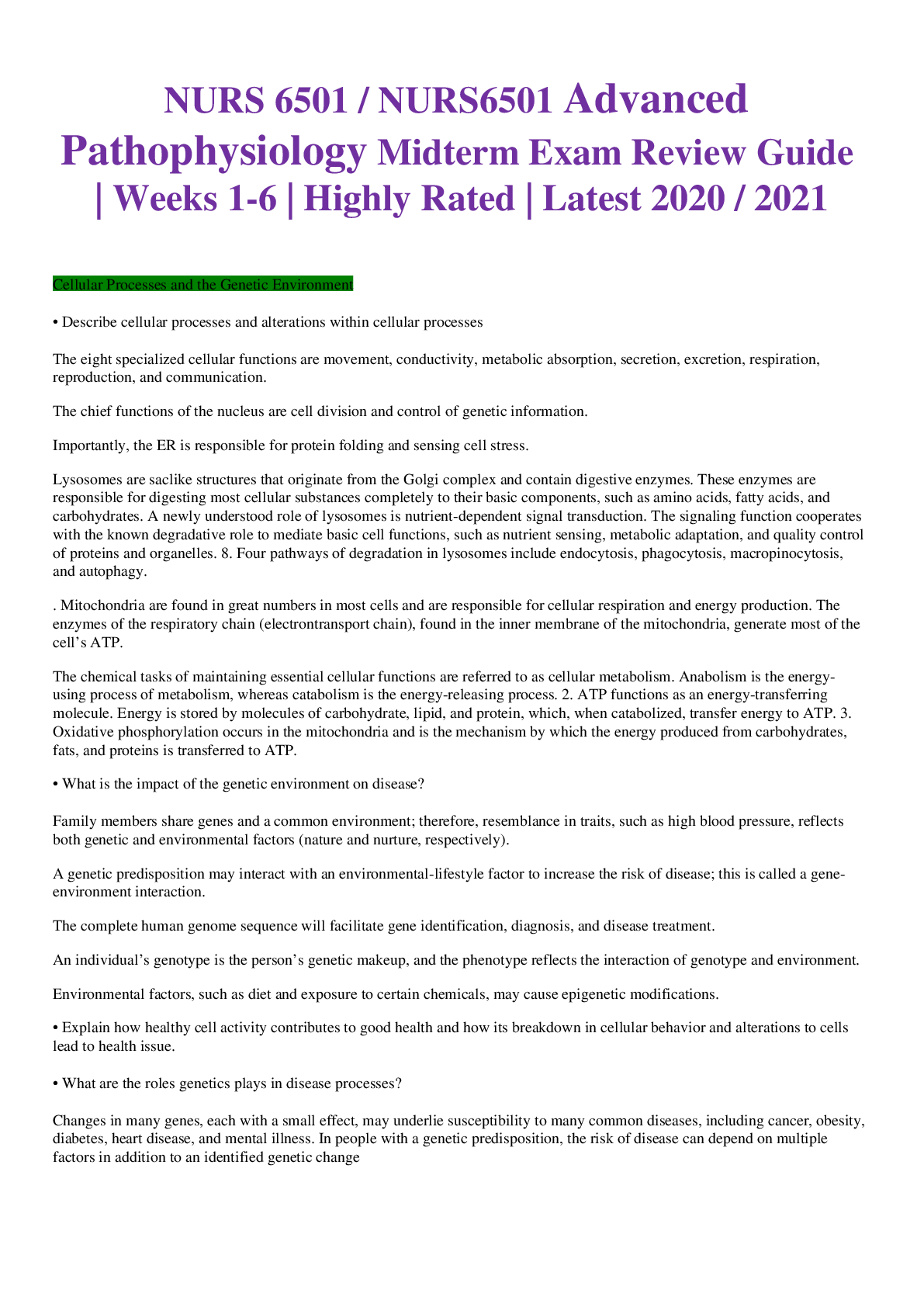

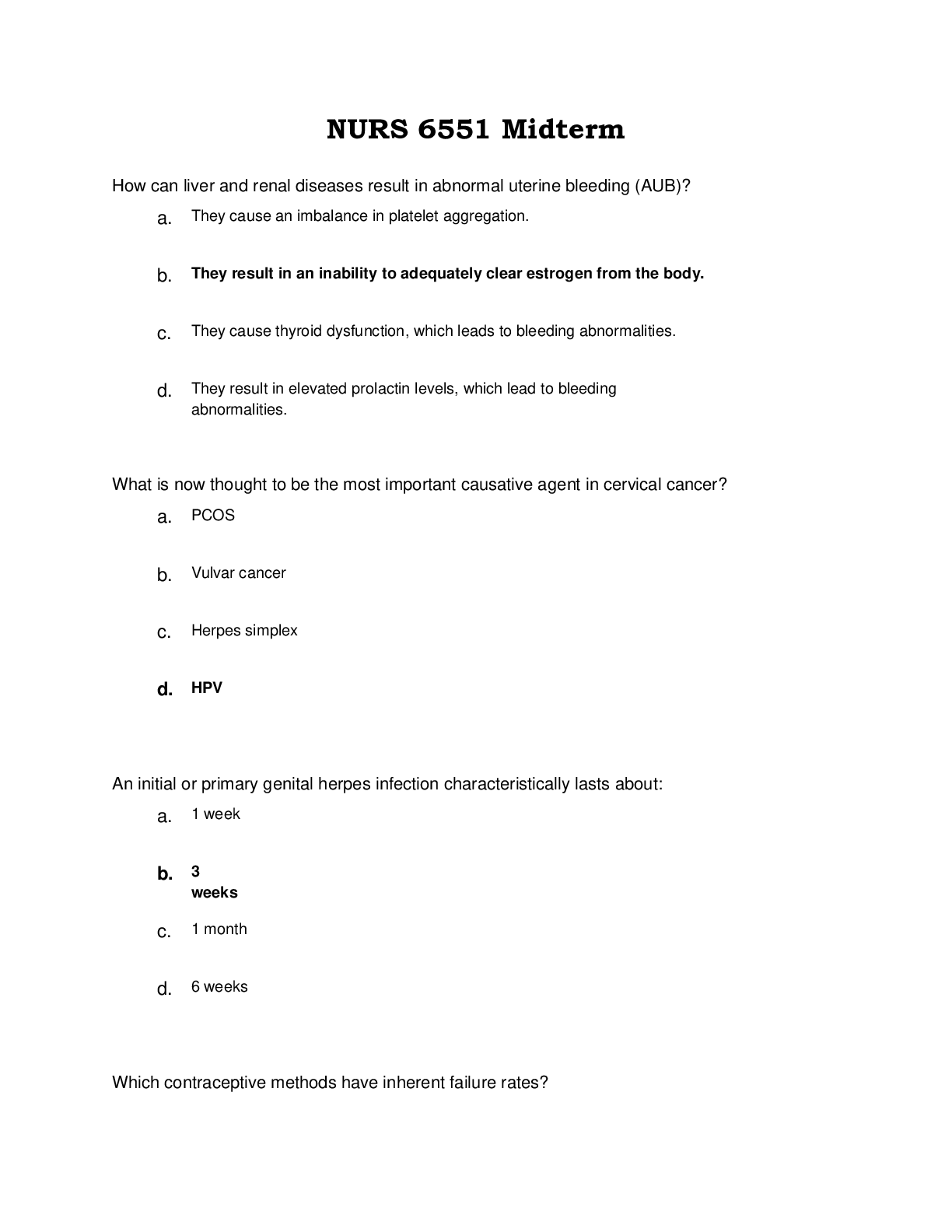
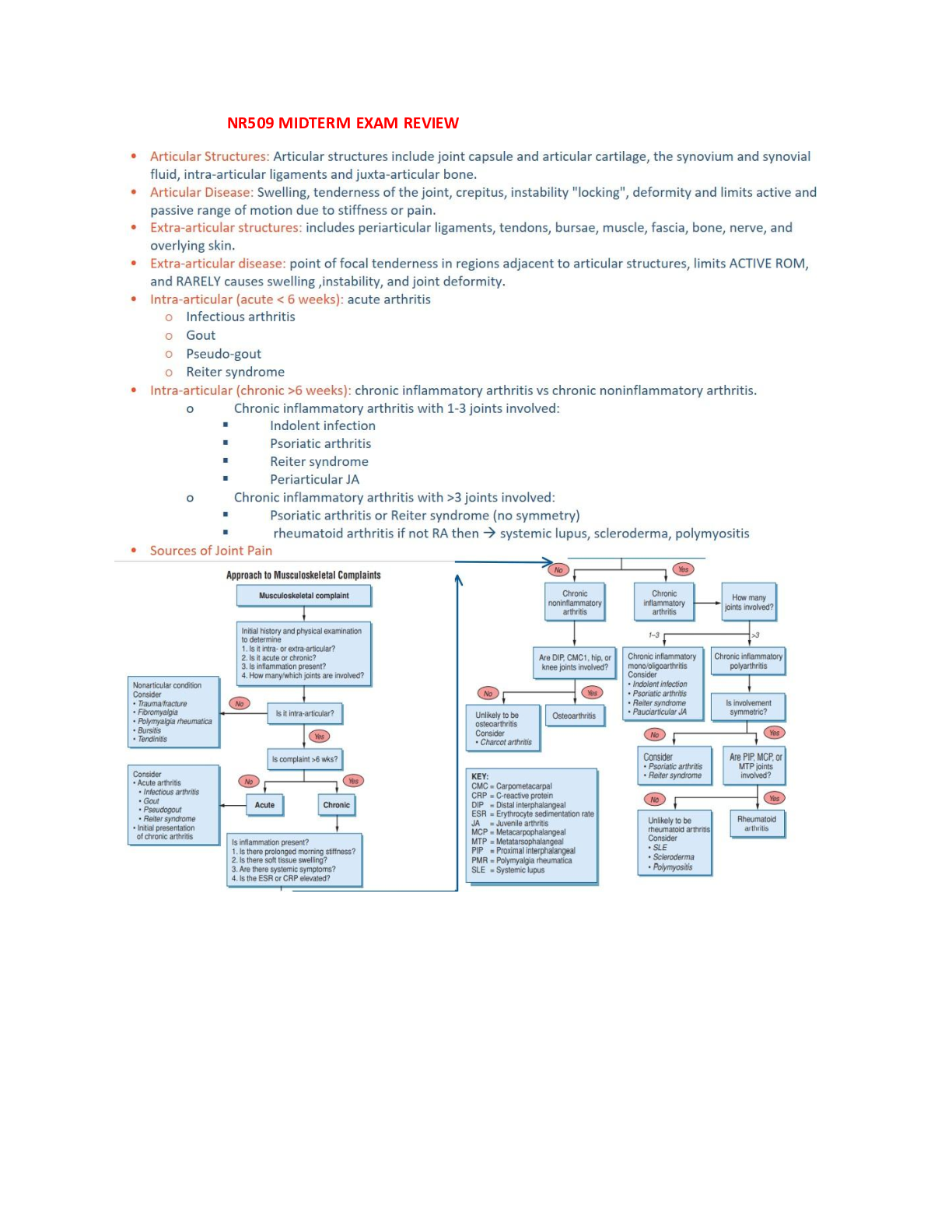


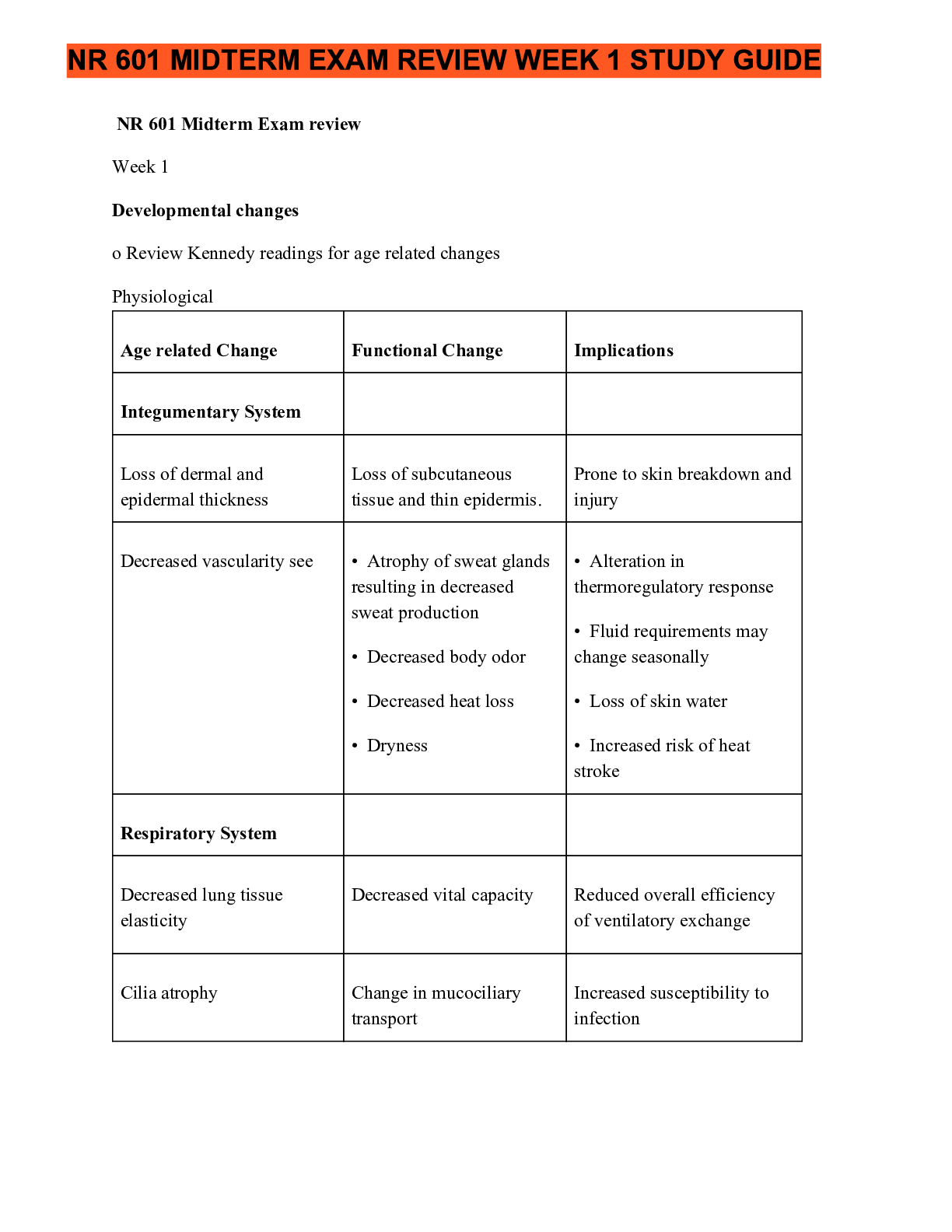


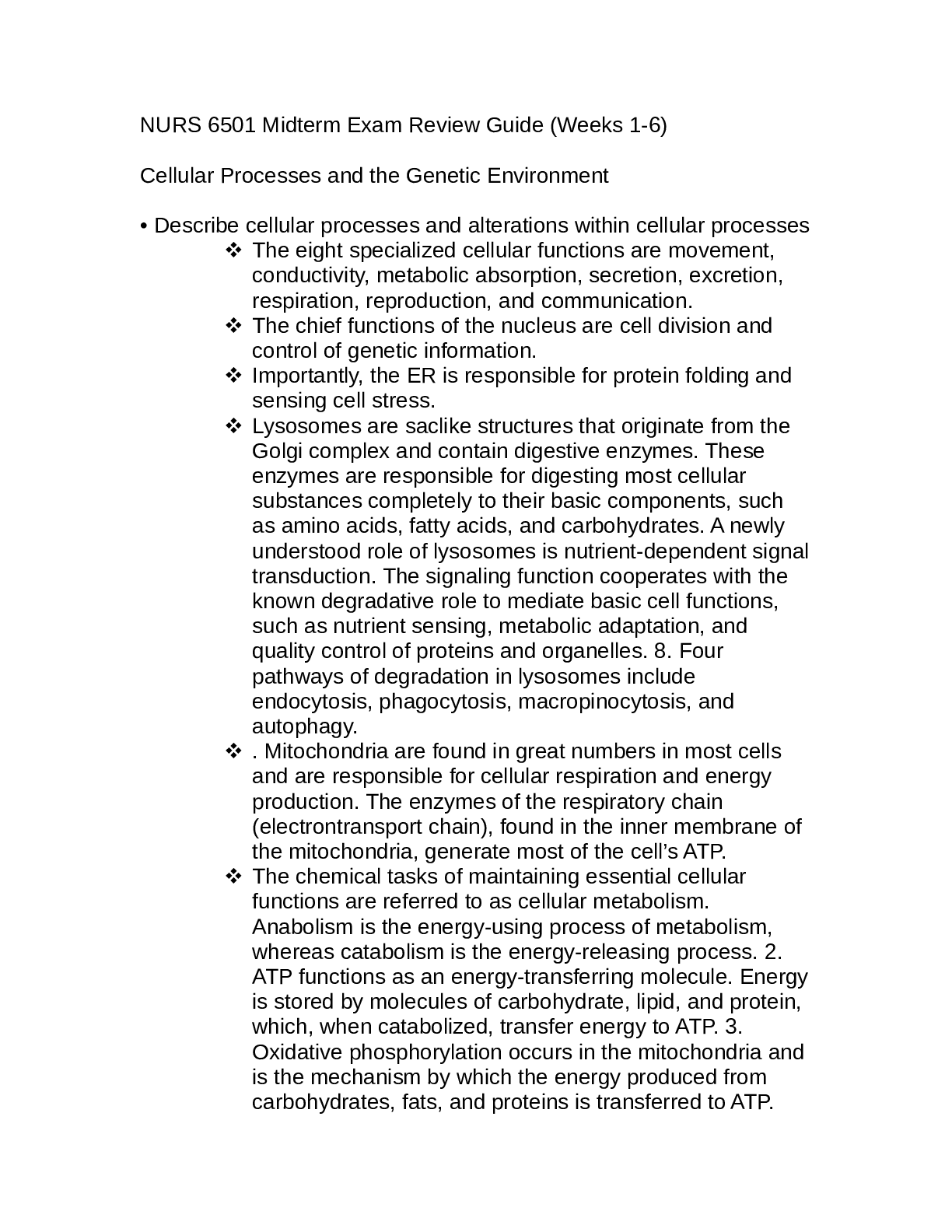
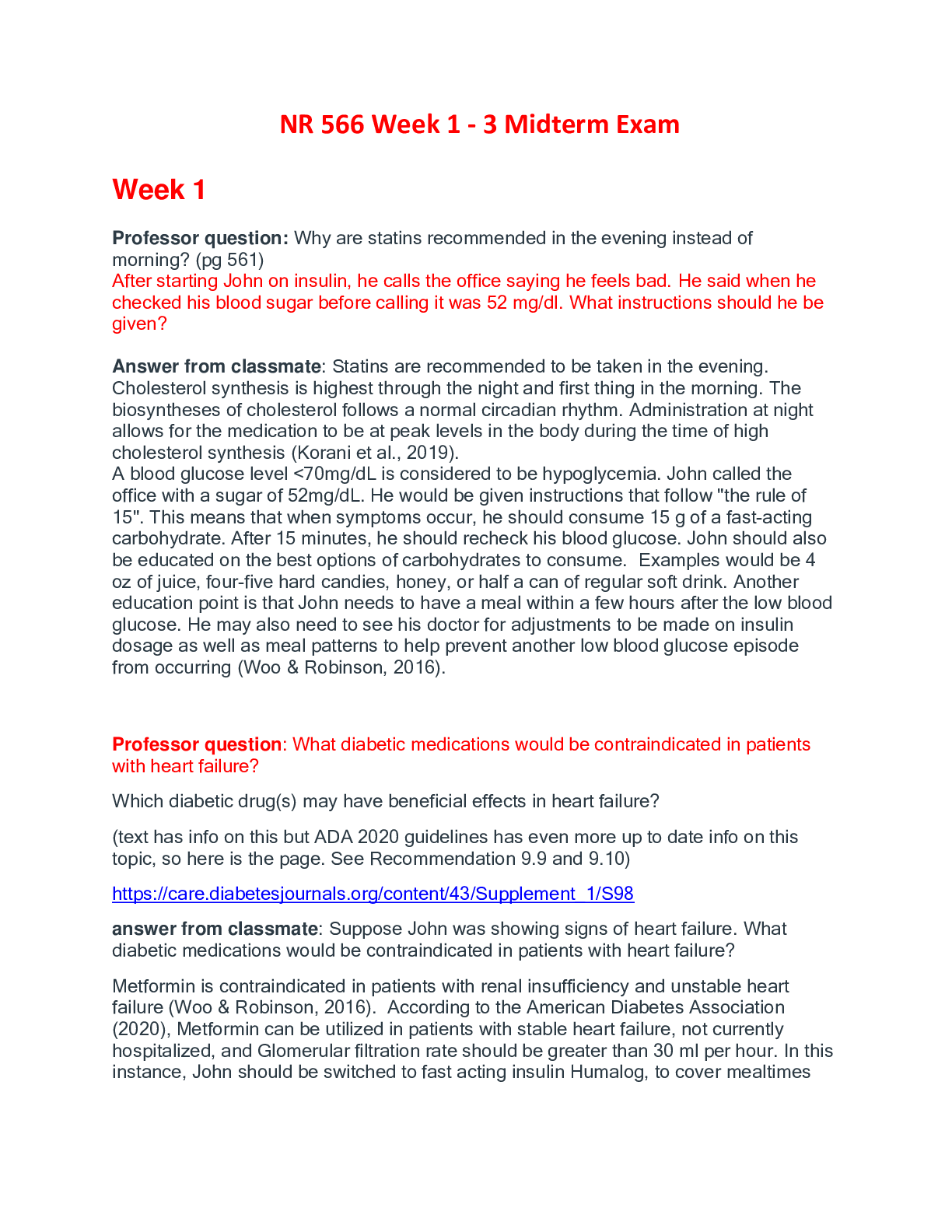
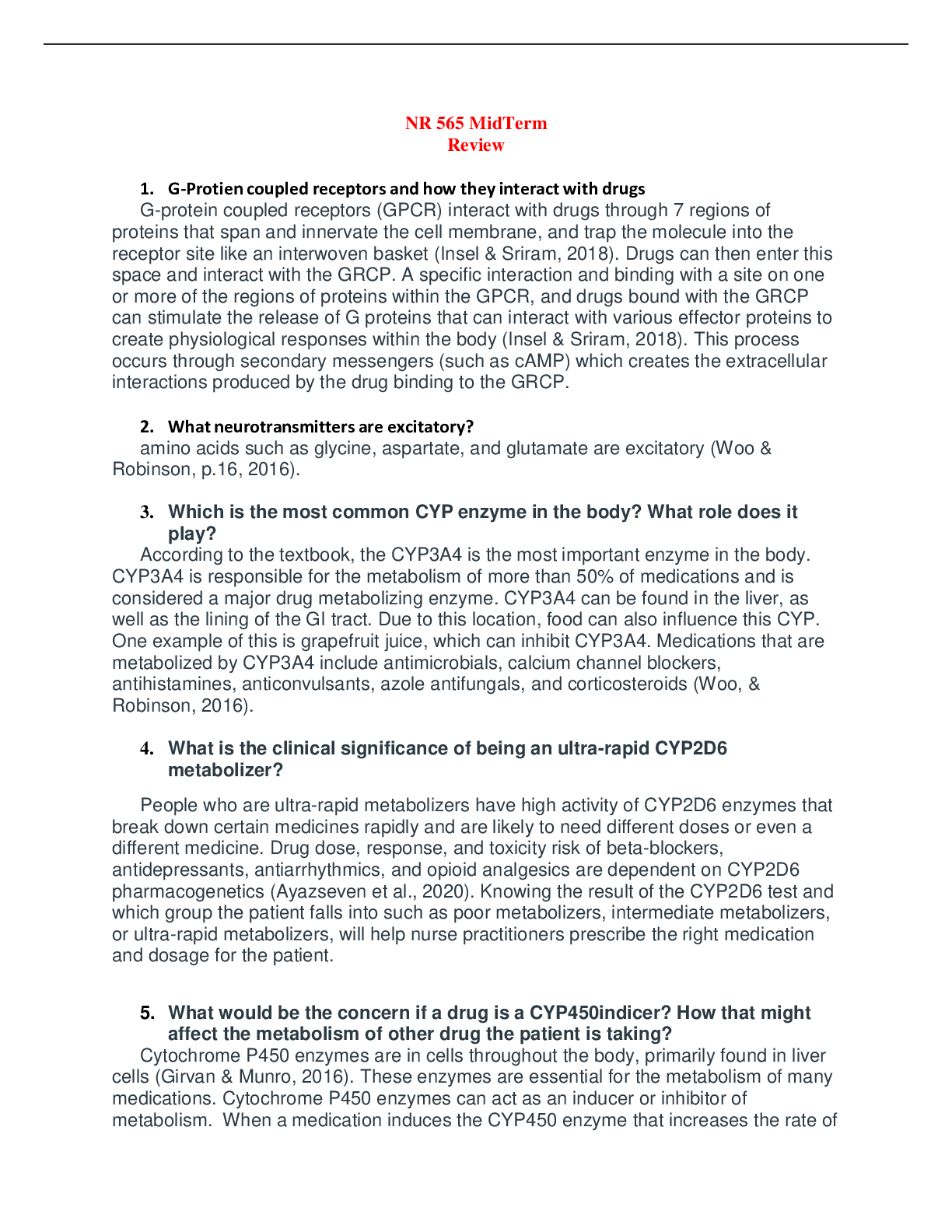

 (2021), Latest Questions and Answers with Explanations, All Correct Study Guide, Download to Score A.png)
